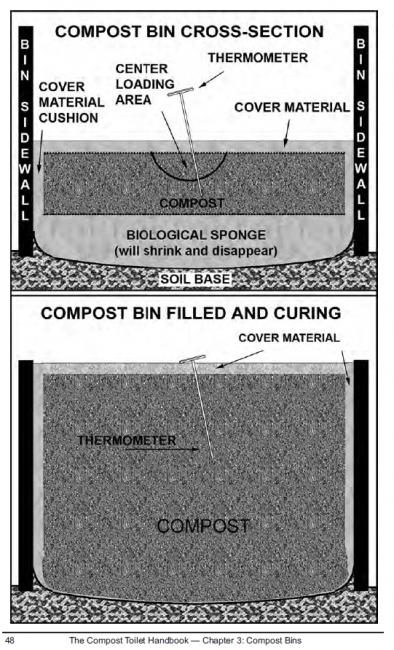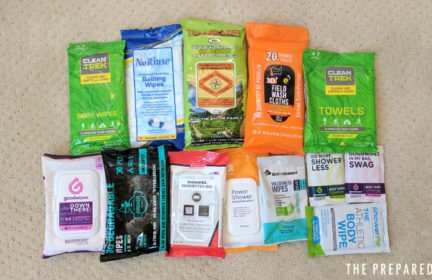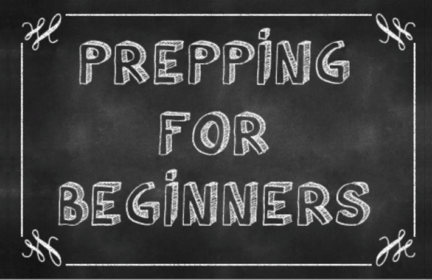Pooping in a pail and other prepper pastimes
I am in the middle of a plumbing problem and thought I’d share what I’m learning AS I’m learning it, since I learn a lot from the “what went well/what didn’t” threads elsewhere in this Forum. To the extent possible I’ll try not to repeat what is in the “Toilets when there’s no water” thread.
It seems our outbound sewer line is blocked. We are lucky that we have an unfinished basement so the disgusting backup is mostly in our non-living areas. But though we have plenty of clean incoming water, if any of it goes down the drains it just makes the backup WORSE and more disgusting. My preps are coming in handy, but I’ve learned some things! Warning, this thread is – kinda gross.
- You need more trash bags than you think. I’m peeing in the toilet as usual but not flushing, and throwing the wet TP in the trash. Despite my husband’s objections, I am also
- Pooping in a pail, using my “luggable loo” for “#2”, with two trash bags inside and a big scoop of kitty litter. It still smells, though, so I take it out to the trash afterward and thus the need for lots of trash bags.
I wasn’t thinking clearly when this first happened and at first I was trying to practice “hygiene” outside – hand washing, etc. using the outdoor faucets. This sucked since it is freezing here. I quickly realized that all I really have is a drainage problem, so I put big bowls under each house faucet to catch the hand washing water and then I throw it outside. From this I learned a few other things:
- Pails are REALLY handy. LOTS of pails. In addition to the “luggable loo” pail, which is serving its purpose, I have a pail in the bathroom to dump the hand wash water into, and a pail in the kitchen for dishwater. To the extent possible I’m using biodegradable soap and as the pail fills up I’m dumping it on the edge of the woods.
- I also had to use a pail for cleaning up the backup in the basement. It was disgusting. Thank goodness I had dish gloves and plenty of hand sanitizer. At first I was cleaning up with the ol’ wringing out a wet rag method, but this took forever. I finally figured out that using a squeegee to push the water into a large dustpan worked much faster. I probably made thirty trips to the woods with buckets of gross water. My next prepping purchase will be a water vacuum. Would love a review of those for a future guide.
The stuff I bought for hurricanes – shampoo caps, GoodWipes, wet toilet paper, etc. (plus the hand sanitizer that has basically become a staple in pandemic times) have been absolute gifts when I need to use as little water as possible. Here are some other tiny things I’ve noticed:
- Habits are VERY hard to break. My husband kept running the faucets etc. without thinking, thus making our backup worse. I made signs with a big red magic marker and post-its saying “STOP! Minimize water use!” and posted at each sink and toilet, and that helped.
- My preps were not as – prepped – as I thought. It took me a while to find the Luggable Loo, the trash bags, and the solar shower (which I ended up not needing). I thought I was SO organized! I wasn’t. We always say we should practice but does anybody really? These “mini emergencies” – only a drainage problem, instead of a full on emergency – are the ideal scenarios in which to work out the tiny details (which is why I am writing about it).
- We should have a list of hotels with in-room laundry and kitchen facilities. This problem has been going on for three days now (a plumber came on day one and SAID the problem was fixed – it wasn’t!) and we are considering moving to a hotel. However, with Omicron raging I really, really don’t want to be around other people, so finding a place with in-room laundry and kitchen facilities would be ideal. Good to learn this now as in the future I might need to find one quickly, and WHEN you’re dealing with a literal “poopy situation” is not the time to figure stuff out like that.
- I found myself remarkably reluctant to use my preps. Example: The kitty litter with the Luggable Loo. I thought, Well maybe I should save this for a “real” emergency. I decided the situation definitely warranted the use of my supplies and that I can buy more kitty litter later!
- Very grateful for my “not quite BOB”. In addition to my full-on BOB, I keep a fully packed suitcase with three days’ worth of clothes, toiletries, and medications in case of a family emergency. I haven’t needed to use it yet but knowing that it is there is a stress reducer. Given that we can’t do laundry just now, having three days of clean clothes set aside is a blessing.
Well, the plumber just called and is on his way. Stay tuned. My next post might be about my hotel room kitchen kit, that allows us to have hot healthy meals even in a hotel without a kitchen. I put it together last summer in case we had to travel in the pandemic but haven’t tested it out yet.
-
Comments (35)
-



